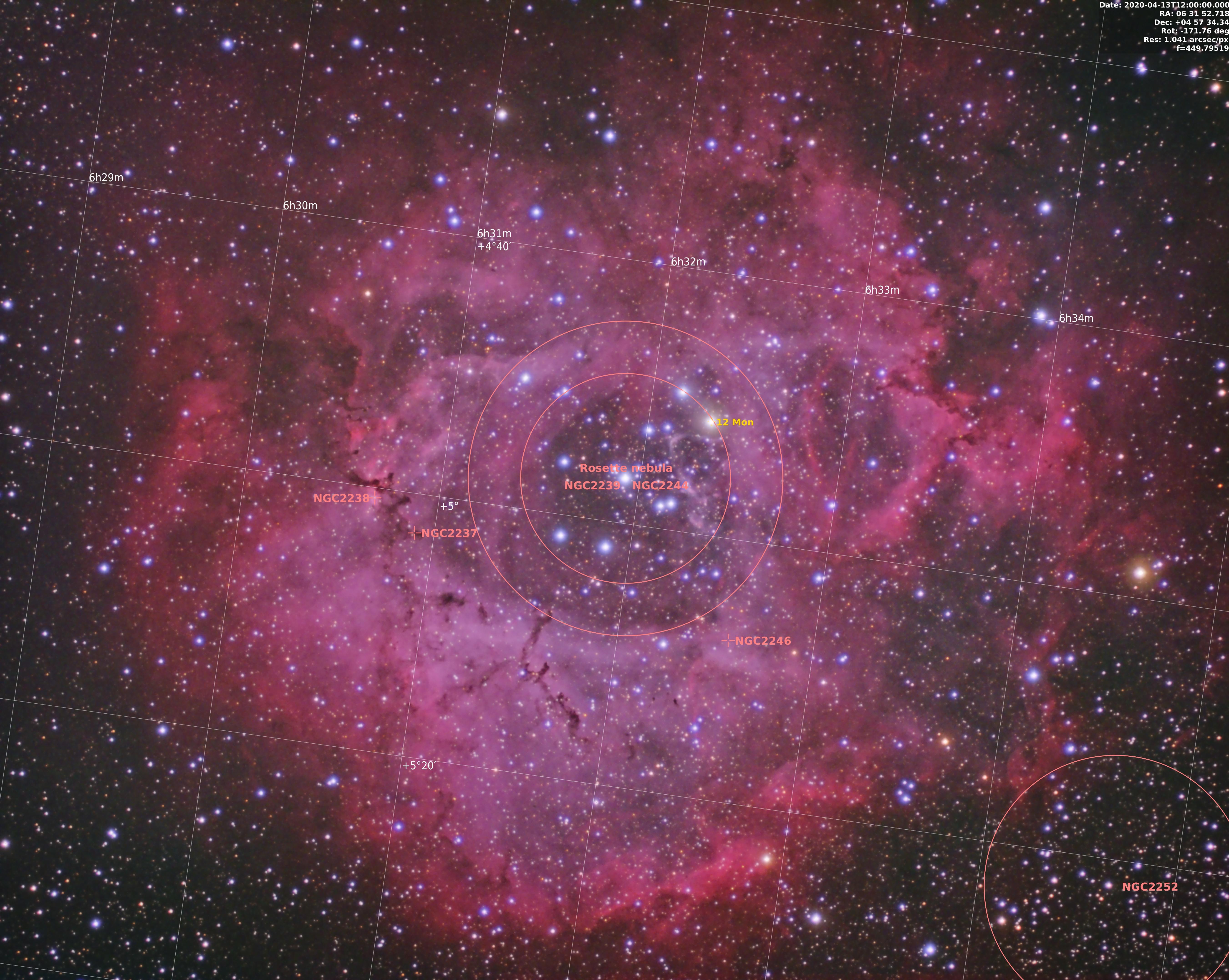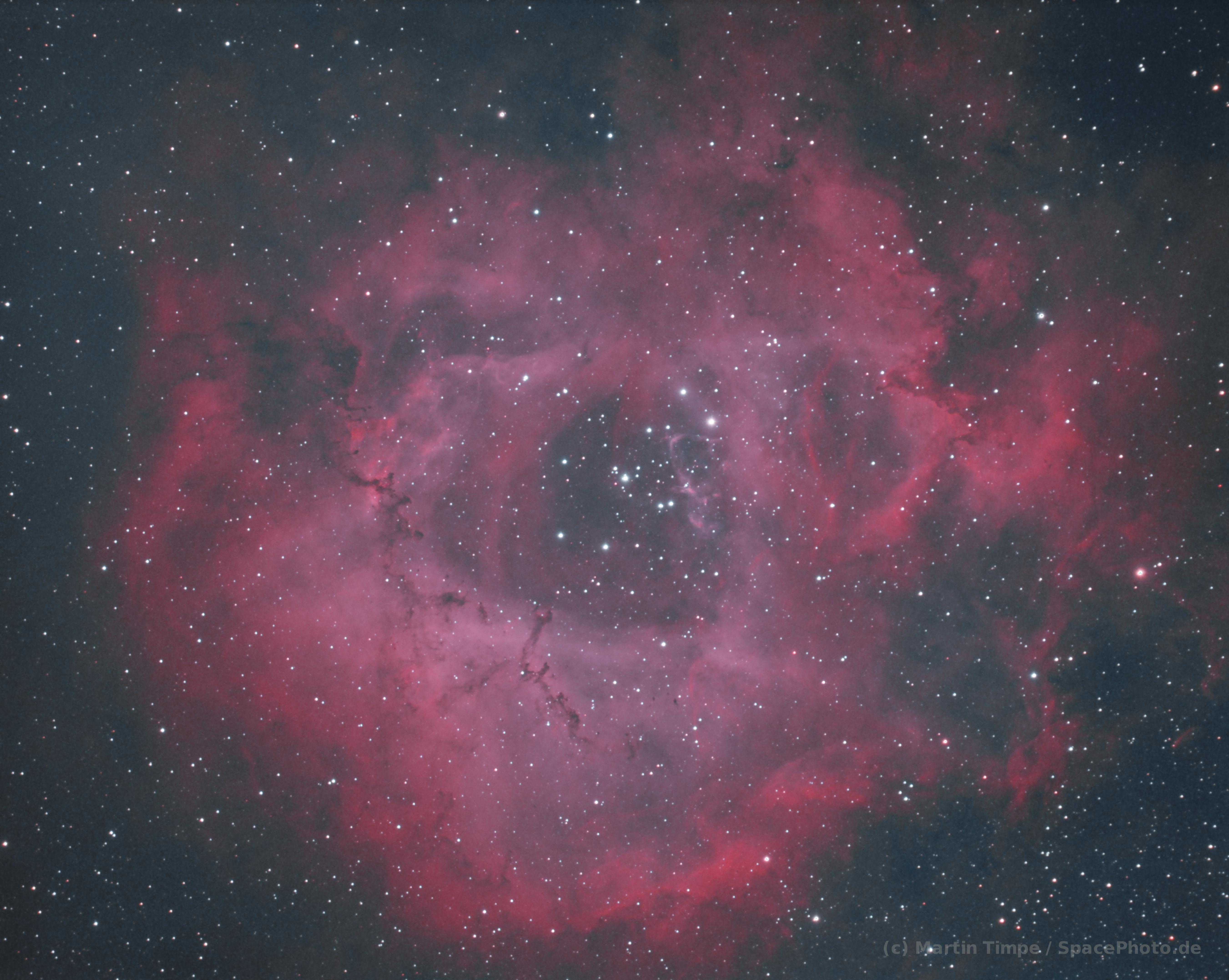NGC 2237 The Rosette Nebula
The rosette nebula NGC 2237 is a H-II emission region in the constellation monoceros (unicorn). Its distance to our solar system was measured to be roughly 5.200 light years and its diameter to about 130 light years. A mass estimate yields approximately 10.000 solar masses.

Imgage data: Telescope Skopos f=560x0,8=448mm @f/5.6, Camera Atik 460EXM, 17x600s Ha, 12X600s O[III], 51/52/53x120s RGB
The open cluster NGC 2244 can be found in the centre of the Rosette nebula. The light emission of the surrounding gas clouds that constitute the Rosette nebula are stimulated by the radiation of hot class O and B-stars of the centre cluster. The strong solar winds originating from NGC 2244 have cleared a bubble of approximately 12 light years diameter. In the inner area closer to the star cluster the gas clouds emit light in the O[III] band. This is the reason why the colour transitions slightly from violet to red from the inner to the outer perimeters of the nebula. The gas clouds undergoes permanent expansion at a rate of appr. 20 km/s with the consequence that no gas emissions will be observable after a few million years. Besides of hydrogen the rosette nebula also consists of dust which reflects the blueish light of the bright stars of the cluster NGC 2244.
In the lower right image corner the open cluster NGC 2252 is visible.
In the images North is up and East is right. To the raw image data two processing flavours were applied: The upper processing is colored by the RGB channels while the luminance channel is a blend of the synthetic luminance channel of the RGB channels and the narrow band channels H-alpha and O[III]. The picture at the very bottom of this blog post is a bicolor processing of only the H-alpha and the O[III] channel where Red=1.0*H-Alpha, Green=1*O[III] and Blue=1.0*O[III].
- Image data:
Refractor f=560mm f/7 with Reducer 0.8 to f=448mm f/5.6
Camera Atik 460Exm with Baader RGB and narrow band filters
- Exposure times:
17x600s Ha
12x600s O[III]
51x120s R
52x120s G
53x120s B
Total 9h52min
Date: 10-13.03.2022
Location: Bad Kreuznach, Germany
Mount: Vixen GPD2 with Boxdörfer Control Unit
Guiding und Imaging Control with INDI / PHD2 / CCDCiel running on XUbuntu Linux
Image processing done with PixInsight und Darktable

